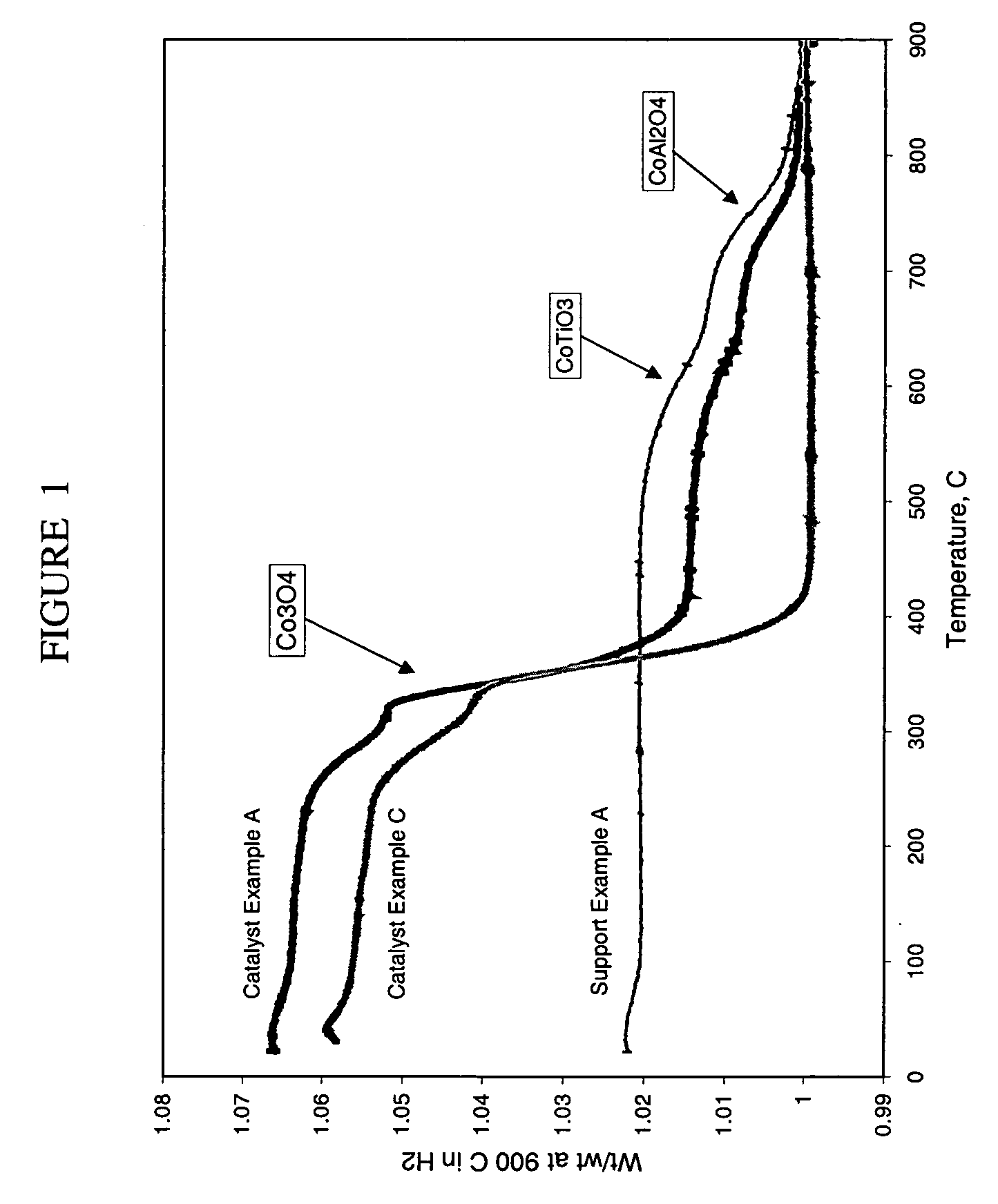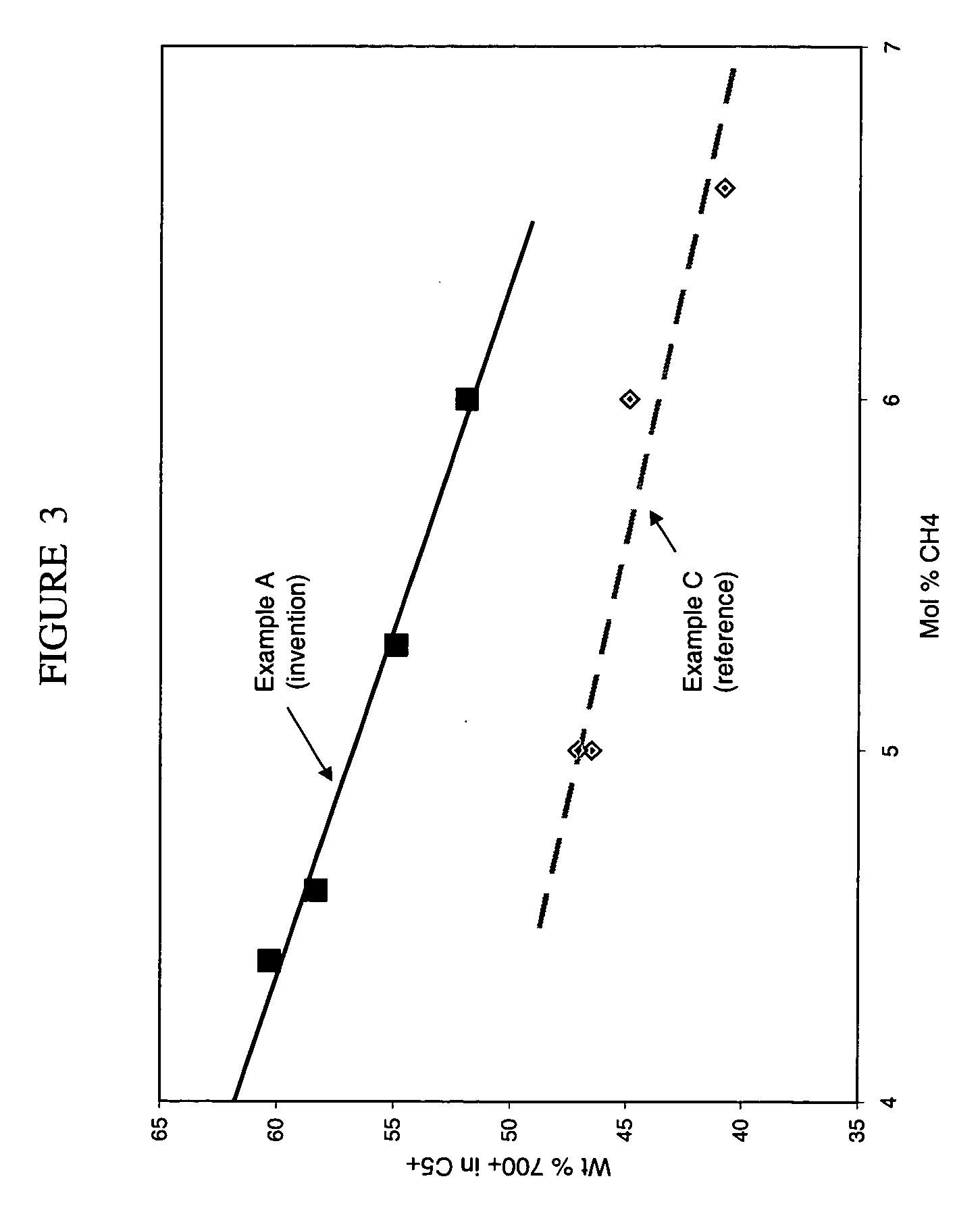Preparation of titania and cobalt aluminate catalyst supports and their use in Fischer-Tropsch synthesis
a technology which is applied in the field of preparation of titania and cobalt aluminate catalyst supports and their use in fischer-tropsch synthesis, can solve the problems of excessive fines in reaction mixtures, weakening of catalysts, and high cos
- Summary
- Abstract
- Description
- Claims
- Application Information
AI Technical Summary
Benefits of technology
Problems solved by technology
Method used
Image
Examples
examples
[0027] Catalyst Preparation
example a
Support and Catalyst of the Invention
[0028] (a) Titania Support
[0029] A titania support was prepared by spray-drying as follows. A slurry feed was prepared by mixing 34.4 parts (by weight) of Degussa P-25 fumed TiO.sub.2, 8.8 parts alumina chlorhydrol sol (containing 23.5 wt % Al.sub.2O.sub.3), 0.6 parts silica sol (Nyacol 2034 DI, containing 35 wt % SiO.sub.2), and 56.2 parts water. This mixture was fed to a 9 ft diameter spray-drier at a rate of about 13 lb / minute through a 9 inch wheel atomizer spinning at 10,000 rpm. The spray-drying chamber was operated with an inlet air temperature of about 285.degree. C. and an outlet temperature of about 120.degree. C. while spraying. The product consisted of solid spherical particles with an average size of about 60 microns and a composition of 94% TiO.sub.2-5.4% Al.sub.2O.sub.3-0.6% SiO.sub.2 by weight.
[0030] The spray-dried support was calcined in a rotary calciner at 732.degree. C. to produce a support with the following properties: 24% ...
example b
Support and Catalyst of the Invention
[0036] (a) Titania Support
[0037] A titania support was prepared by spray-drying as described in Example A, Part (a). The support was calcined in a rotary calciner at about 700.degree. C. to produce a support with the following properties: 16% of the TiO2 in the rutile form, 44 m2 / g surface area, and 0.52 cc / g water pore volume.
[0038] (b) Cobalt-Modified Titania Support
[0039] The titania support from (a) was impregnated with cobalt nitrate and calcined at high temperature to form a cobalt-modified support as follows. A 10.13 gram portion of cobalt nitrate hexahydrate was dissolved in de-ionized water and the total volume made to 51 ml. All of this solution was added in portions with good mixing to 100 grams of titania support from (a). The free-flowing product was calcined in air in a laboratory oven at 800.degree. C. for 3 hours. This calcination served to dry the material and decompose the cobalt nitrate to Co3O4 during the heat-up and then conv...
PUM
| Property | Measurement | Unit |
|---|---|---|
| Angle | aaaaa | aaaaa |
| Angle | aaaaa | aaaaa |
| Temperature | aaaaa | aaaaa |
Abstract
Description
Claims
Application Information
 Login to View More
Login to View More - R&D
- Intellectual Property
- Life Sciences
- Materials
- Tech Scout
- Unparalleled Data Quality
- Higher Quality Content
- 60% Fewer Hallucinations
Browse by: Latest US Patents, China's latest patents, Technical Efficacy Thesaurus, Application Domain, Technology Topic, Popular Technical Reports.
© 2025 PatSnap. All rights reserved.Legal|Privacy policy|Modern Slavery Act Transparency Statement|Sitemap|About US| Contact US: help@patsnap.com



